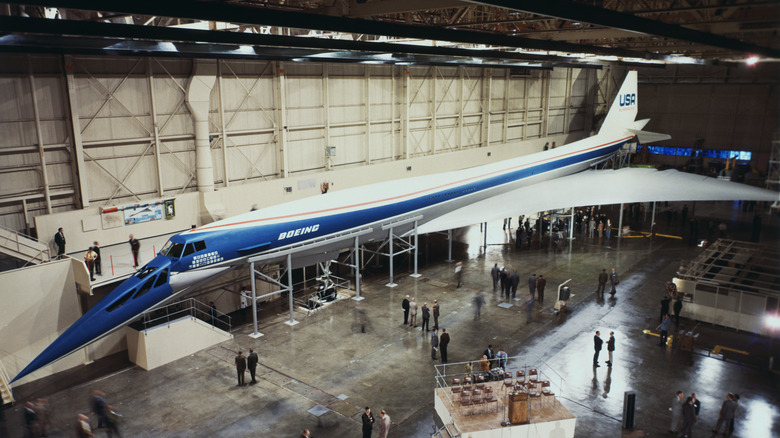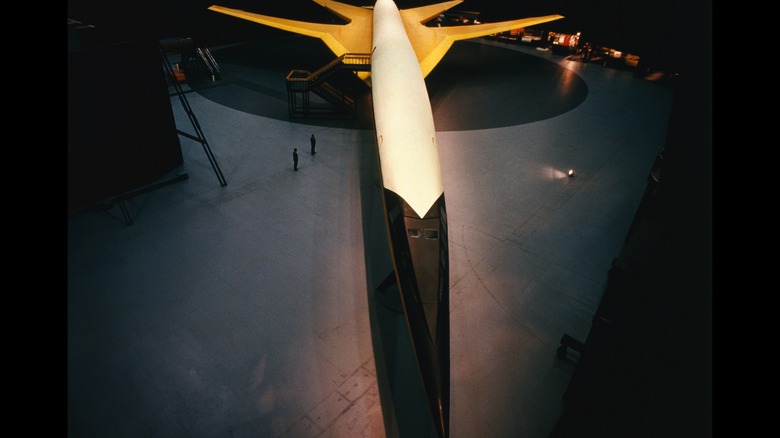What Was The Boeing 2707 Supersonic Jet And Why Didn't It Make It To Production?
Britain and France had a bit of a monopoly on supersonic passenger planes with the Concorde airliner, a plane that was ahead of its time. Boeing wanted to create its own supersonic transport (SST) for America and set out to build the 2707. The plane took some cues from the Concorde jet, such as a drooping nose. However, the plane being an American design and America having a penchant for bigger things, the 2707 was going to hold a maximum of 300 passengers (versus Concorde's 100) and travel as fast as Mach 3 with a range of 4,000 miles. The Concorde's record-breaking flights went up to Mach 2.04.
Boeing looked at a supersonic bomber designed to outrun enemy aircraft for the wings, the XB-70, wanting to create variable sweeping wings. This would allow the 2707 to keep its wings out straight during takeoff and landing for stability, and sweep them back during flight for speed. Unfortunately, that idea proved too heavy for the platform, forcing designers to return to the drawing board. They came back with a delta wing design.
The American SST was a popular idea with airlines and even the American government, as it poured some money into the project as well. Boeing managed to build three prototypes before the entire project was scrapped. One might think it was because of Concorde's July 25, 2000, crash, but the 2707 was being built during the '60s. So, what killed this supersonic plane's production?
What went wrong?
Despite the B2707's popularity, 122 orders were made between 26 airlines, the SST never got to stretch its wings. The American government invested roughly $1 billion at the time, but had to revoke its funding because of the Vietnam War and the 1970s oil crisis that inflated fuel prices. Congress held a vote in 1971 that killed its funding for the project. Furthermore, the general public was concerned with the environmental impact the plane would have. Travelling at supersonic speeds would produce a sonic boom, which anyone over its flight path would feel, and the amount of fuel it burned would be a detriment to the already deteriorating ozone layer.
So many noise complaints poured in about the Concorde alone that the US Government Accountability Office (GAO) tested its noisiness around Dulles International Airport, the only airport in the United States that the SST operated out of. These environmental concerns, along with the inflating cost, prevented Boeing from building anything other than the B2707 prototypes.
Despite the B2707 project crashing and burning, NASA funded the High Speed Civil Transport project in the '90s, a joint effort between Boeing, McDonnell Douglas, Pratt & Whitney, and General Electric. This project set out to develop a supersonic jet that was both environmentally friendly and economically feasible.

